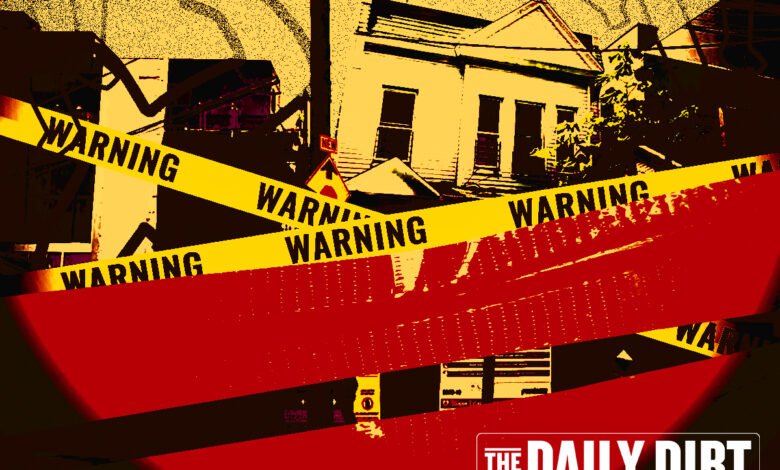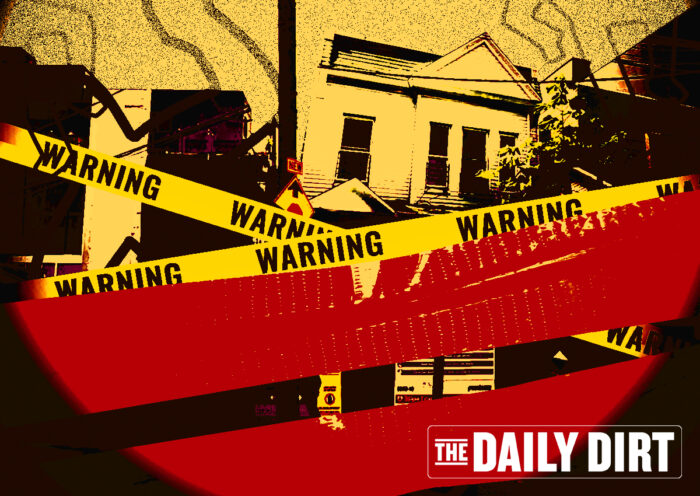NYC Law Ramped Up Fines for Illegal Dwellings, Not Deaths


What’s worse: potentially deadly housing or death itself?
The answer is eight paragraphs away, but don’t skip ahead.
Our subject today is the Department of Buildings’ most recent monthly enforcement report, which features the usual rundown of fines given to property owners for unlawfully adding dwellings.
The point of these fines is to ensure that people don’t die, especially if a fire erupts. Illegal partitions, bedroom locks and lack of proper egress, for example, can trap residents and impede firefighters.
In the Bronx, the agency fined Antonio Collado $120,000 for adding six SRO units to a two-family home at 450 Cyrus Place. Five Boro Storage was dinged $75,000 at 220 East 134 Street, a six-story building authorized for storage, office and lounge use, where inspectors found 16 SROs.
Ivan Vasquez faces $50,000 in penalties at 2798 Pond Place, a two-family converted into a four-family. And Jagdeshwar L. Saadhu is looking at $37,750 for the conversion of 2488 Elm Place, a two-family dwelling, to a five-family with full-height partitions.
One incongruity from the report, however, is that these fines for potentially deadly conditions exceeded the penalty at a construction site where someone actually did die.
UA Builders was fined just $22,500 at 16 Wade Square after a worker fell from the fifth floor while installing panels. The department found no record of site safety orientation on the day of the fatality, no certified riggers and a knuckle boom operating without approval or inspection.
Meanwhile, in Brooklyn, the fine was 11 times greater — $246,250 — at 286 West End Avenue, where a two-family was illegally converted to a six-family that lacked the required means of egress, automatic sprinklers and fire alarms.
Why the discrepancy?
Local Law 94, passed in 2017, jacked up the fines for illegal conversions when three or more dwelling units are added to a building. The law compels the Office of Administrative Trials and Hearings to issue specific penalties for each illegal unit found and daily penalties until the illegal conditions are corrected.
The fine is $15,000 to $25,000 for each illegal unit if there are more than three, plus a $1,000 daily penalty (maxing out at $45,000) until the condition is corrected.
The law did not accelerate fines for violations on a site where a fatality occurred. In those cases, OATH judges have wider liberties when issuing fines, according to a Department of Buildings spokesperson. (OATH is independent of the agency.) Penalties for construction safety violations can be up to $25,000 each, at OATH’s discretion.
What we’re thinking about: If Nir Meir pleads guilty or is convicted, will his sentence be any more than the time he’s already served at Rikers Island? Send your thoughts to eengquist@therealdeal.com.
A thing we’ve learned: When a sensor detects a problem in a building, staff members are more likely to respond if they receive a call from a person than a notification on their phone. Disclaimer: This information comes from a firm that provides monitoring with alerts from humans. But it seems logical. Read more about the proptech revolution in leak detection here.
Elsewhere…
Bank branches are closing again, which is bad news for owners of retail real estate because banks are prolific and reliable tenants.
This is not the first period of bank branch retrenchment; a previous one occurred because ATMs reduced the need for tellers. But it reversed because banks wanted to intercept customers in person and sell them expensive services, such as money management.
However, the trend is now reversing again, in part because ATMs have been supplemented by digital banking apps.
Closing time
Residential: The priciest residential sale Tuesday was $13 million for a 2,455-square-foot, sponsor-sale condominium unit at 220 Central Park South. Deborah Kern of the Corcoran Group had the listing.
Commercial: The most expensive commercial closing of the day was $11 million for a 25,420-square-foot warehouse at 1314 59th Street in Borough Park.
New to the Market: The highest price for a residential property hitting the market was $16.9 million for a 7,500-square-foot townhouse at 159 East 61st Street in Lenox Hill. The Deborah Grubman Team at Corcoran has the listing.
Breaking Ground: The largest new building application filed was for a 68,682-square-foot, 12-story, 99-unit mixed-use project at 205 West 230th Street in Kingsbridge. Kao Hwa Lee Architects filed the permit on behalf of Westbridge Realty Group. In case you missed it, check out Elizabeth Cryan’s story “The era of 99-unit buildings has arrived.”
— Matthew Elo




